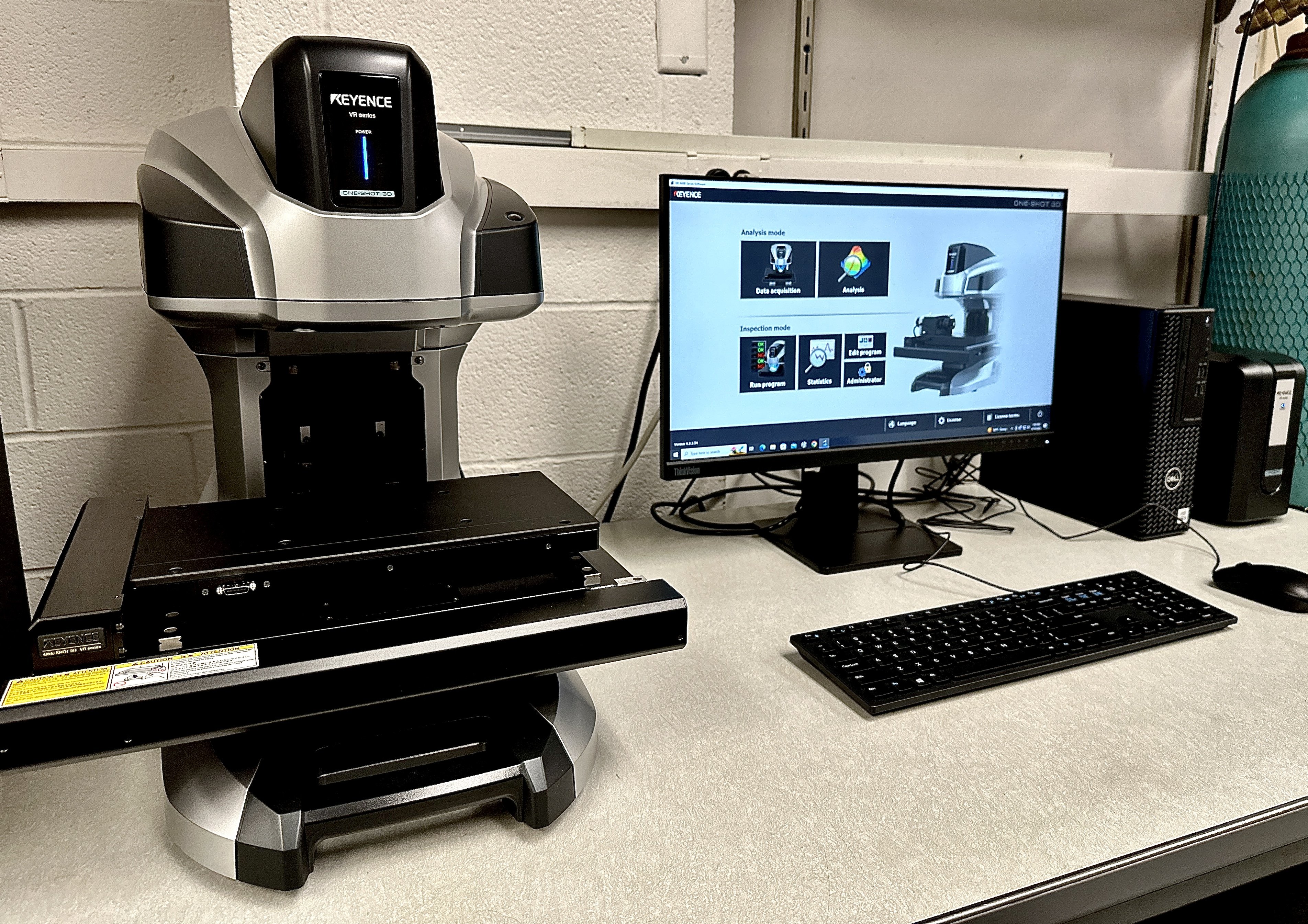Optical microscopy relies on the focus of visible light wavelengths to magnify the natural resolution of the human eye. Optical microscopy has a functional resolution of 1-10 microns because of the aberrations in the lens systems. Additionally, because the field of focus of an optical microscope is small, observing rough or curved samples is difficult. This is where 3D reconstructions are helpful. These microscopes stitch together multiple images to increase the depth of field.
Keyence VR-6200 3D Optical Profilometer

Watch a YouTube video about the Keyence VR-6200
The VR-6200 optical profilometer performs non-contact measurements and captures full surface data across the sample with a resolution of 0.1 µm, enabling measurement of features that cannot be performed with probe-type instruments. The new rotational scanning greatly expands the measurement capabilities of the system. Wall thicknesses and recessed features can be measured without cutting or destroying the target. In addition, the HDR scanning algorithm provides enhanced scanning capabilities for instantly determining the optimal settings to capture high quality data, even on glossy and matte surfaces.
There are numerous measurements that can be taken quickly with a 3D profilometer. For example, this system can be used to record the profile of a target by tracing its surface, enabling measurement of 3D features and surface roughness. It can also capture 2D data to measure lengths, widths, and angles. A 3D profilometer also creates a computer-generated 3D model of the object for visualization of the overall shape, while still maintaining a high resolution to observe minute surface features.
A 3D profilometer can be used for a wide range of applications across multiple industries. Examples of materials that can be analyzed using a surface profiler include medical devices, jet engine turbine vanes for the aerospace sector, and valve trains found in automotive manufacturing. Using a 3D surface profilometer in these contexts means you can get accurate measurements of material thickness and detection of defects without the need for the instrument to come into contact with the object. Unlike conventional surface roughness profilometers, parts can be rotated to scan surfaces that would not be accessible otherwise. These qualities and capabilities make these devices ideal for collecting measurements and inspecting precision components such as batteries, circuit boards, and stamped metal parts.
Keyence VHX-5000 Optical Microscope

The VHX-5000 is an all-in-one microscope that incorporates observation, image capture, and measurement capabilities. A high-resolution image is obtained with single-wavelength light and the HDR (High Dynamic Range) function that captures multiple images by varying the shutter speed, to produce a fine detail image. A wide area, high resolution image can be captured with just a button press on the console. Using the VHX-5000 XYZ-stage, images in a wide area can be stitched in a short time without misalignment. This allows for a large field of view to be captured and observed at once. Images can be stitched up to 20000 (V) x 20000 (H) pixels.
